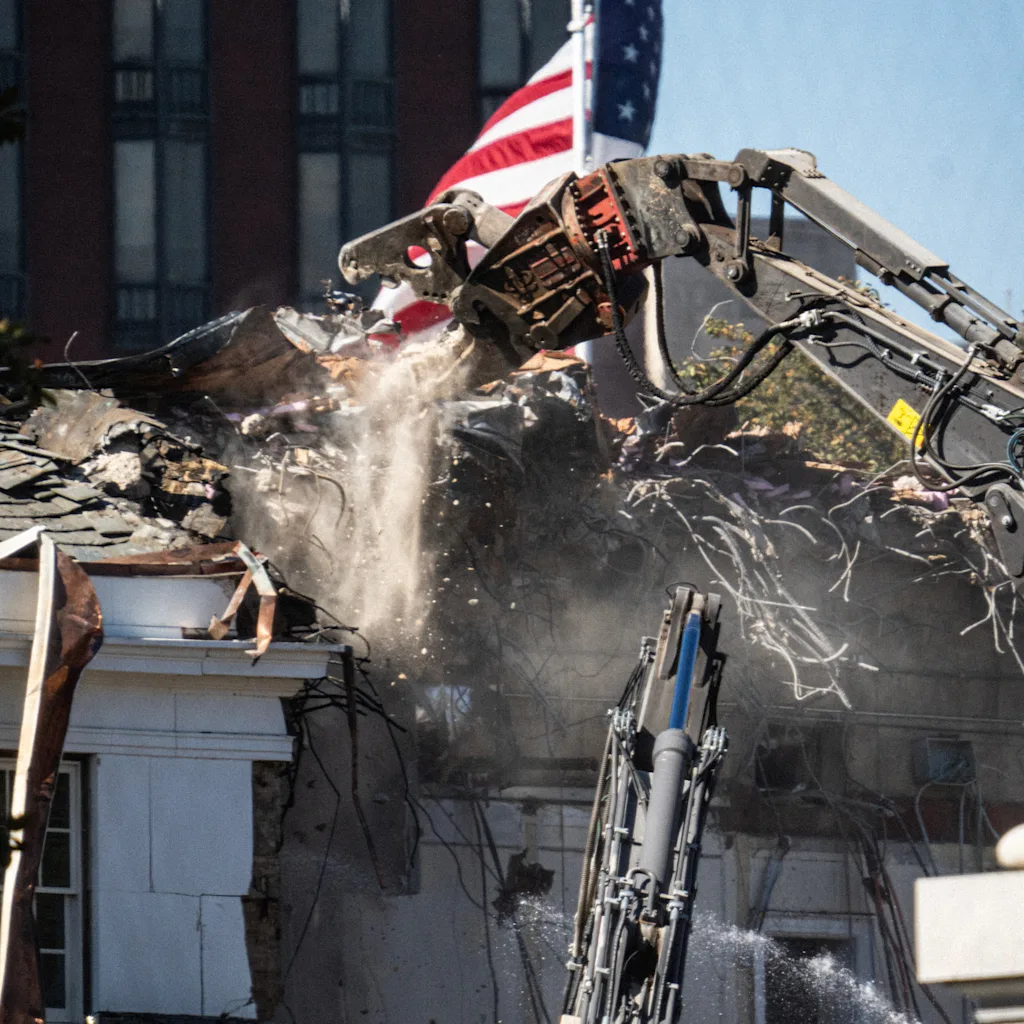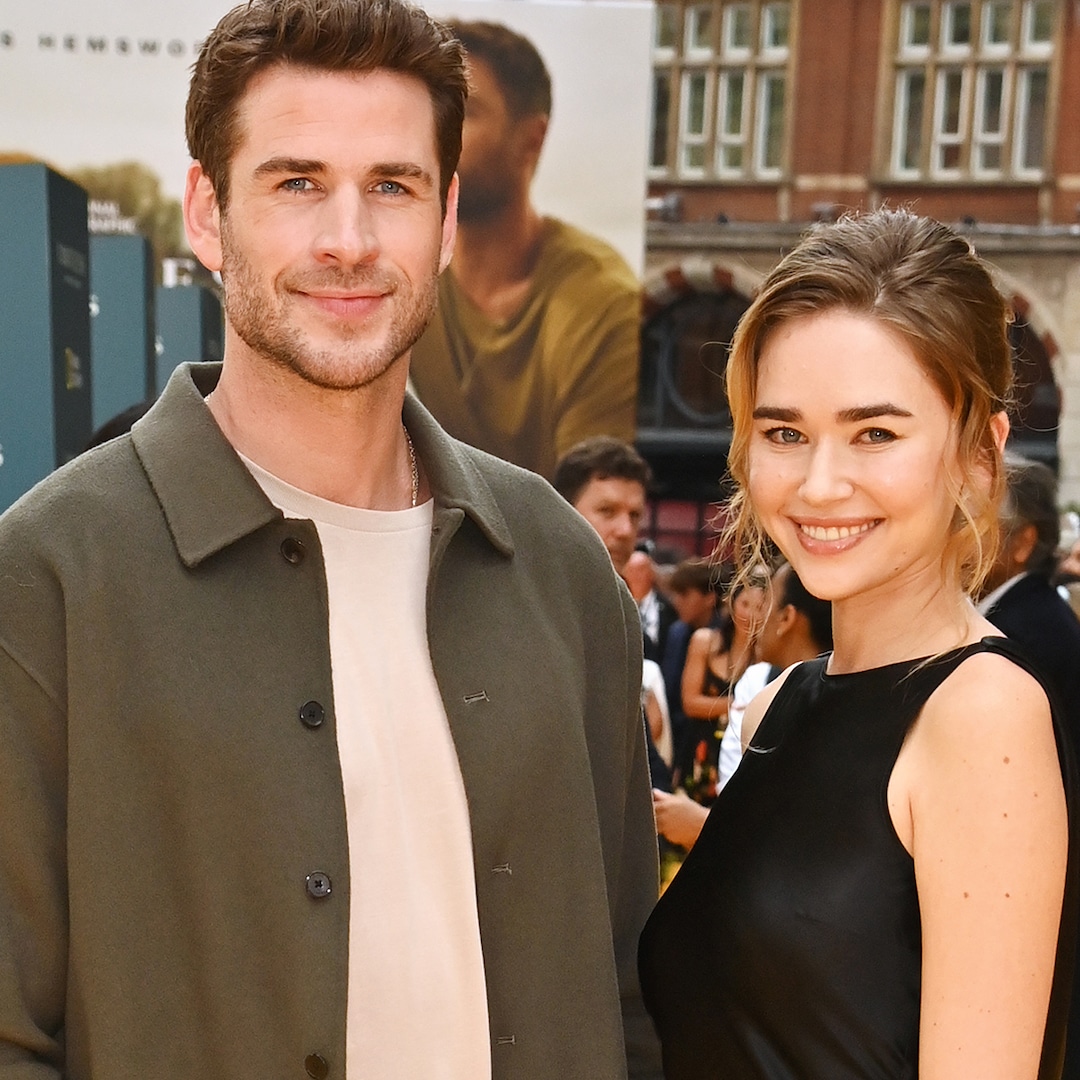The White House, one of the most historically significant and secure buildings in the United States, is being torn apart.
Demolition crews were on the White House grounds this week to begin demolition of the front facade of the East Wing in order to make way for the construction of a new 90,000-square-foot ballroom that President Trump announced in July. “I am pleased to announce that ground has been broken on the White House grounds to build the new, big, beautiful White House Ballroom,” Trump wrote on social media the day the work began.
When the ballroom was first announced this summer, Trump said the project “won’t interfere with the current building.” During a press briefing, White House Press Secretary Karoline Leavitt went even further, saying “nothing will be torn down.”
Those statements turned out to be false. Photos and videos taken at the site on October 20 show the walls of the building being chewed to bits by heavy construction equipment outfitted with a jaw-shaped demolition tool that looks like the head of a tyrannosaurus rex.
“This is one of the most important buildings in the nation. This is one of the symbols of who we are as a people,” says Bryan Green, a former commissioner on the National Capital Planning Commission, a government agency that oversees and advises on planning in the Washington, D.C. area. “It’s hard to look and see a wrecking ball hitting it.”
An exemption leaves little protection for the People’s House
Despite the White House’s historic and symbolic significance, there was little to protect it from the demolition work now underway. The White House, along with the Supreme Court building, the Capitol building, and several other properties, is exempted from historic preservation rules that would otherwise stand in the way of such a building being torn down.
Under section 106 of the National Historic Preservation Act of 1966, a strict review process is required for federal projects that may affect historic buildings, leading to both public scrutiny and legal obligations surrounding any proposed changes to existing historic resources. When it comes to the White House, various other entities have some level of oversight, including the National Park Service, the Commission of Fine Arts, and the National Capitol Planning Commission, but none can fully override a project like the demolition and ballroom addition due to the building’s Section 106 exemption.
During his time on the National Capital Planning Commission, Green says he participated in the Section 106 review process and found it beneficial to the outcome of the projects in question. “Projects generally improve as a part of that process,” he says. “You’re having lots of eyes on them, having lots of different people with different interests look at these things and comment on them. They get better.”
The White House ballroom project and its related East Wing demolition had very little, if any, public involvement. Though Trump initially said that several concepts were being considered for the project, the administration did not release any designs or name any architects ahead of July 31, when Trump announced that the White House had chosen Washington, D.C.-based McCrery Architects as the lead architect of the project. Trump has said the project, with an estimated cost of $200 million, would be funded by donors, himself included, “with zero cost to the American Taxpayer!”
The White House did not respond to a request for comment. McCrery Architects referred Fast Company’s questions to the White House.

“A reminder of how far that exemption can be taken”
The White House’s exemption from the Section 106 review process is “unfortunate,” says Priya Jain, an associate professor of architecture at Texas A&M University. “This project and what is happening serves as a reminder of how far that exemption can be taken,” Jain says.
The exemption for the White House, along with the Supreme Court and the Capitol, is not explicitly explained by the policy, but Jain says it likely has to do with evolving security and operational needs that officials don’t want bogged down with an official review or approval process. “Security and safety concerns are paramount,” she says.
Jain is also chair of the Heritage Conservation Committee of the Society of Architectural Historians, which recently issued a statement expressing concern over the lack of oversight on this project, calling for “a rigorous and deliberate design and review process.”
The organization notes that the White House has undergone numerous exterior and interior modifications since construction began in 1792, including a major reconstruction after the British set fire to the building during the War of 1812, the construction and expansion of the West Wing in the first decade of the 1900s, and the construction of the two-story East Wing building in 1942. This was the last major addition to the White House.
The White House has evolved, but so has the preservation field
In a recent post on LinkedIn, White House Historical Association president Stewart McLaurin ran through the changes the White House has seen over the centuries, and the criticism they caused. For example, the now-iconic colonnades added to the building by Thomas Jefferson in 1801 were seen at the time as extravagant and reflecting “aristocratic tendencies,” according to McLaurin.
The East Wing, as it was until a few days ago, was built in the midst of World War Two, sparking criticism about the misappropriation of funding during an international crisis. Even the Rose Garden, which has since been paved over by Trump, was criticized for its elitism.
“Media and Congressional criticisms have often focused on costs, historical integrity, and timing, yet many of these alterations have become integral to the identity of the White House,” McLaurin writes. “It is difficult for us to imagine The White House today without these evolutions and additions.”
Notably, all these changes happened before the creation of the 1966 National Historic Preservation Act, which is why the Society of Architectural Historians is so concerned about the Section 106 exemption being exploited for such a large demolition and construction project.
“The preservation field has come a long way,” says Jain. She notes that though the section had exempted the buildings at the time of writing, their status as prominent public buildings sets a precedent for other preservation projects and “they should follow some of these best practices that have been established.”
The Trump administration has emphasized the importance of having the ballroom completed “long before” the end of Trump’s term, which may have played a role in the fast pace of design selection and starting construction.
“Designing in public takes time. It takes time to work towards a consensus,” Green says. “I would assume that the goal was just go fast, no revisions. I don’t know that for sure, but it sure looks like that.”















Leave a comment